The Boy Scouts of America has always been a uniformed body. Its uniforms help to create a sense of belonging. The Scouting program has three specific objectives, commonly referred to as the “Aims of Scouting.” They are character development, citizenship training, and personal fitness. To accomplish these aims, the BSA has designed eight methods in Boy Scouting. One of these methods is uniforming. Wearing a uniform gives youth and adult members a sense of identification and commitment.
Over the years, Scoutmasters have noticed that Scouts who truly try to live by the Scout Oath and Law in their daily lives seem to be moved by the spirit to wear the Scout uniform. Why? What is so magical about a complete Class ‘A’ uniform including a BSA issued shirt, pants/shorts, socks and belt? Why would the BSA include uniforming as part of the eight methods of Boy Scouting? Let’s take a few minutes to investigate this method to see what it brings to the table.
The uniform supports the first Aim of Scouting, that of character development. The uniform is a symbol of the boy’s commitment to Scouting – his acceptance of the BSA’s ideals and willingness to live by them. The boy knows that when he is in that uniform he is expected to act in accordance to the values of the BSA and the values he has made an oath to live by. This purpose of uniforming is as much a part of the method as uniting him with his troop or patrol. Boy Scouts is an action program, and wearing the uniform is an action that shows each Scout’s commitment to the aims and purposes of Scouting. You can relate the requirement to wear a uniform to your son playing sports. Would you take your son to a baseball, football, soccer or basketball game without his complete team uniform? If no, then please treat the Class ‘A’ Boy Scout uniform with the same respect.
The Scout’s identification grows even greater when it is realized that the uniform gives the Scout an identity in a world brotherhood of youth and adults who believe in the same ideals. The uniform identifies youth and adult members of the Boy Scouts of America, visible as a force for good in the community. When properly and smartly worn, the uniform can build good unit spirit.
Scouts often do not have a complete understanding of Scouting or the commitment they have chosen to make. We need to communicate to them that that the uniform is a symbol of their commitment to Scouting, to the BSA, to their Council and to other Scouts and, not wearing the uniform is a sign to others that they may lack that commitment.
The uniform also makes the Scout troop visible as a force for good and creates a positive youth image in the community. People who are not Scouts recognize the Boy Scout uniform. To the community, the uniform represents a welcome image, a reminder that not all kids are bad.
Uniforming also supports the second Aim of Scouting, that of citizenship training. In that it contributes to patrol and troop spirit. Boys who wear the uniform have a sense of personal equality as the uniform represents a democratic idea of equality, bringing people of different backgrounds together in the Scouting tradition.. The uniform helps to build loyalty and gives the troop and patrol an identity with the program. However, that ‘uniformed Scout’ represents more to himself, to his fellow Scouts and to the public as a whole, than simply belonging to his patrol or his troop. Used broadly, citizenship means the boy’s relationship to others. He comes to learn of his obligations to other people, to the society he lives in, to the government that presides over that society. The BSA uniform unites the boy with this larger goal by uniting him with the organization whose aim is that goal: the BSA.
Uniforming also contributes to the third aim of personal and mental fitness. In Boy Scouting, the Scouts must satisfy certain requirements to achieve rank and responsibility within the program. These requirements often require the mastering of a physical or mental skill. When the requirements are satisfied an award or badge is earned. The uniform gives the Scout a reason to take pride in the way he looks and in the badges and awards that testify to his achievements as the uniform shows the wearer’s activity, responsibility, and achievement. The accomplishments of every youth and adult member can be recognized by the insignia worn on the uniform.
The leaders of Scouting—volunteer and professional—should promote the wearing of the correct, complete uniform on all suitable occasions. You are the model to your boys and your example will reflect itself in them. When you are with the Scouts, even for the simplest of things, put on your uniform. It raises the moral tone of the boys and it heightens their estimation of their uniform when they see it is not beneath a grown man or woman to wear it. It also heightens their estimation of themselves when they find themselves taken seriously by men and women who also count it of importance to be in the same organization with them. As Scouters, we must constantly remind ourselves that it isn’t so much what we say to the Scouts that they will emulate, but what we do. The Scouts are told by other leaders, by their handbooks and by each other to look to us as role models. And they will, they will do what we do and wear what we wear.
The uniform is a constant reminder to all members of their commitment to the ideals and purpose of the Scouting movement. It is a way of making visible members’ commitment to a belief in God, loyalty to country, and helping others at all times. It is important that each of us fully understands the importance of each of the eight methods of Boy Scouting. I hope that after reading this discussion on how uniforming directly contributes to the three aims of Scouting that you have a better understanding of the often neglected and misunderstood method of uniforming.
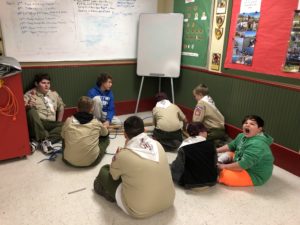
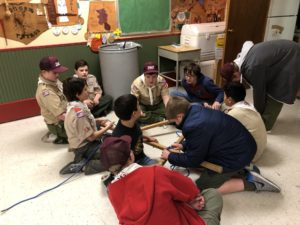

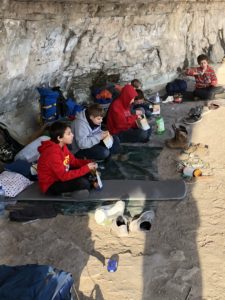



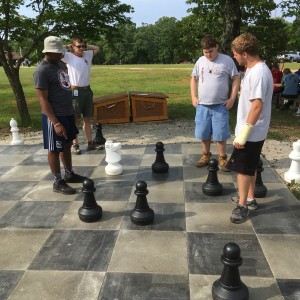
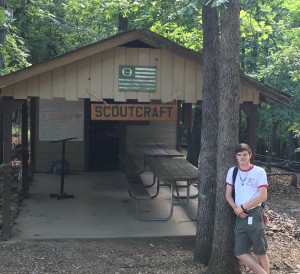


 Click For Map
Click For Map